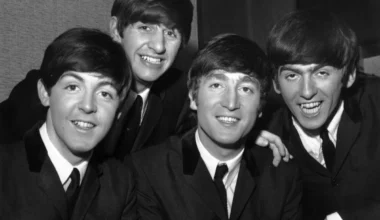Between 1975 and 1981, AC/DC rose as an unstoppable rock force, releasing an album every year and securing their place in rock history with hits like Highway to Hell and Back in Black. Even after losing their iconic singer Bon Scott in 1980, they pressed forward, reaching new heights.
In 1981, they hit their first Number One with For Those About to Rock (We Salute You), cementing their top-tier status. While much has been written about this iconic run, what came next is often overlooked: the 1983 album Flick of the Switch, a release that would become one of AC/DC’s most divisive and commercially disappointing records. Here’s a look at the inner struggles and major changes that shaped its troubled legacy.
The Big Shifts
The year 1981 brought turbulence to AC/DC’s world. As the band faced lineup changes and increasing exhaustion, key figures exited. They parted ways with producer Mutt Lange, who had defined their hard-hitting sound on albums like Highway to Hell and Back in Black, and opted to produce Flick of the Switch themselves. They also let go of their manager, Peter Mensch, who had managed their transition from Scott to Brian Johnson. Mensch would go on to establish Q Prime, representing major acts like Metallica and Red Hot Chili Peppers.
Perhaps most impactful was the dismissal of longtime drummer Phil Rudd. After reported clashes with guitarist Malcolm Young, combined with struggles with substance abuse, Rudd was let go midway through recording Flick of the Switch. Though he had already completed the album’s drum parts, his absence marked the end of a lineup that had been essential to AC/DC’s greatest successes.
Behind the Scenes: Creative and Personal Tensions
As their inner circle shifted, tensions mounted within the band itself. Angus and Malcolm Young, notoriously protective of AC/DC’s sound and direction, became increasingly wary of outside influences. Exhaustion was setting in after years of nonstop touring and recording, creating friction over how to balance their massive success with their commitment to a raw, gritty rock style.
These tensions and changes left an imprint on Flick of the Switch, as the Young brothers aimed for a stripped-down, bare-bones sound that veered away from the polished production fans had grown accustomed to.
A Mixed Reception and Legacy
While Flick of the Switch never reached the acclaim of its predecessors, some fans see it as an underrated album that traded production polish for a rawer, more honest sound. The minimalistic approach was a conscious choice by the Youngs, aiming to capture a live feel without studio refinement.
However, the stripped-back production also alienated fans who had come to expect the robust sound Lange helped craft. In retrospect, some critics argue that Flick of the Switch was unfairly judged, with its negative reception stemming from the impossibly high bar AC/DC had set for themselves.
Conclusion
Whether you see it as a rare misstep or an underappreciated gem, Flick of the Switch stands as a unique chapter in AC/DC’s history. The massive shakeups in management, production, and lineup undoubtedly shaped the record’s sound and perception.
Though it may not hold the iconic status of AC/DC’s biggest albums, Flick of the Switch captures a pivotal moment where the band was grappling with change, seeking authenticity in a world where they’d already achieved it all. Today, the album remains a topic of debate among fans and a testament to the risks AC/DC took in pursuit of their vision.








